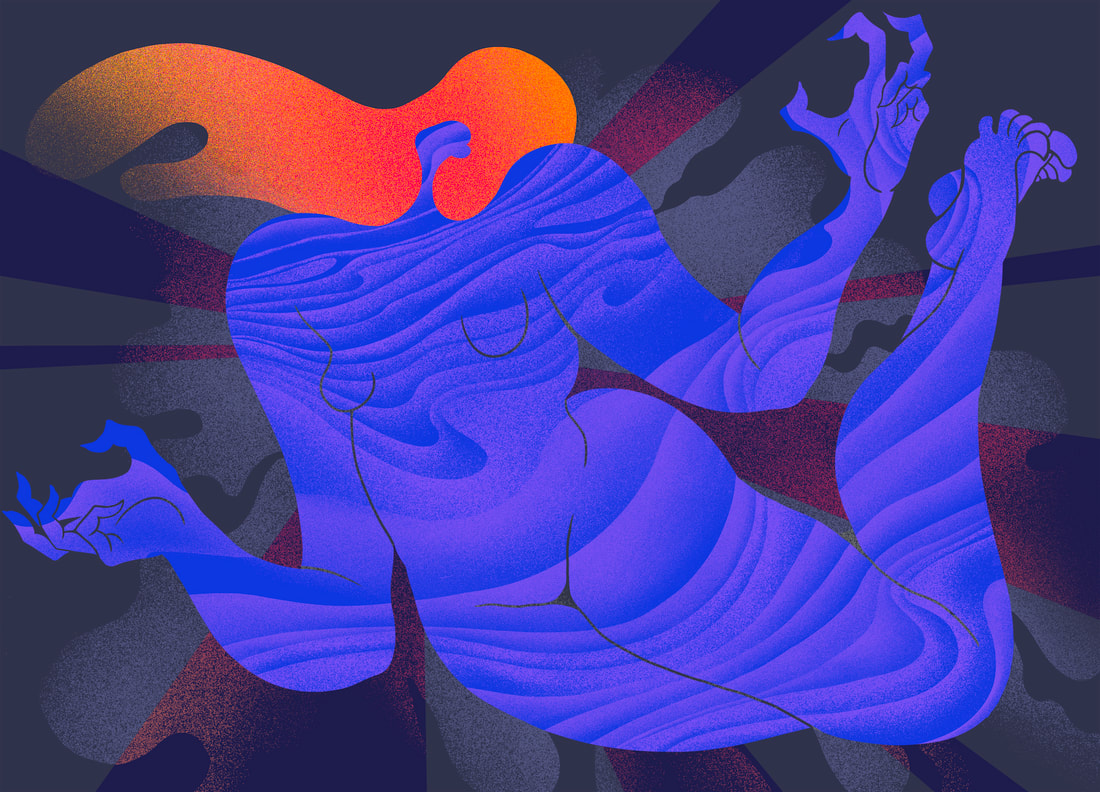Letters from the Editors
|
Over the years, Mirae and I have had many conversations about what it means to be a Korean woman moving through this world--from food, music, and history, to anti-Black racism. Last summer, I thought (somewhat obsessively) about what would happen if sea levels rose so high that South Korea could one day be submerged underwater--granted, this is a scenario that could either happen generations from now or never happen at all. When speaking to Mirae about this, I wondered about the impacts of rising sea levels--what would be the implications of not being able to migrate north? Who would be afforded the privilege of leaving? What that would mean for us, diasporic artists, creating work about home and homeland, if there is none? Even--or especially--as someone with a degree in environmental science, having this kind of conversation with fellow Koreans felt new and different, even strange. For a long time, discussions about climate justice felt compartmentalized from any conversations I had within my Korean community. Our inaugural volume explores water as an entry point to talking about the climate crisis, certainly as a physical, finite resource, but also the different ways that we value water spiritually, emotionally, recreationally, and more. We felt called to respond to the urgency of this global crisis--not as hydrologists, oceanographers, or climatologists, but as part of a community trying to place ourselves in all the ways that urban planning, finances, housing, national and international borders, and even leisure are connected with the ways in which we experience and contribute to the impacts of the climate crisis. We started working on this magazine in the summer of 2019. Little did we know what was to come when thinking about launching a year later. Already, the world has changed dramatically. Moving forward, it’s hard to say what else will change and what won’t. It continues to be a collective effort to understand the long-term effects of and take action during these crises. In a similar way, however small in comparison, this magazine has been a deeply collaborative journey since the first day that Mirae and I created it, from our contributors, editors, and funders, to you, dear reader. Thank you for joining us in this journey. In solidarity, Harriet |
I love water. I immediately feel calm when looking onto vast waterscapes. I always try to find a way to be closer to water as much as I can in the city. I feel alive when I am in water, and I can confidently say that swimming is the only sport I am good at. I have always held an expectation that water will be there when I need it. 언제든지 어디서나. Whenever, wherever. But I have been neglecting what harm it has been facing. Dr. Ayana Elizabeth Johnson, an American marine biologist and conservation strategist, stated that the ocean has absorbed about 30 percent of the excess carbon dioxide and 93 percent of the heat that we’ve trapped. The ocean makes up 70 percent of the entire planet and we have changed the chemistry of its entirety. We have also changed the lives of all the living creatures that are dependent on the ocean. Dr. Johnson asks us all: “How do we prepare for a more dramatically different future?” 그래서 우리는 예측도 제대로 못하는 엄청난 변화가 생길 우리의 미래를 위해 어떤 준비를 하고 있나? So what kind of preparation are we doing for the uncertain, dramatically different future? I believe we are currently living through the results of our actions and inactions towards water which we have long taken for granted without making real efforts to mend it. When Harriet and I first brainstormed choa’s inaugural volume, we chose water as an accessible gateway into thinking and talking about the climate crisis. However, as months passed and we found ourselves living in this moment of the unprecedented and of mobilization, I have learned that the conversation is far more than “save our planet,” but a call for climate justice where everyone on this planet can enjoy the pleasures of water as I can, and most importantly, feel safe, every day. Where do we meet water? How do we care for water? How do we live in symbiosis with water? I have been thinking through these questions while also extending them to consider our relationships with one another. And I never forget Grandmother Josephine Mandamin’s words: “Water is alive. Water can hear you.” 우리는 어디서 물을 만나나? 우리는 어떻게 물을 보살피고 있나? 우리는 어떻게 물과 조화로운 관계를 맺을수 있나? “물은 살아있다. 물은 우리를 듣고 있다.” We begin choa with alertness, apprehension, and appreciation. We invited artists and professionals of various fields to share water’s presence. Their perspectives and stories have been informing my responses to these questions, and I hope they will also accompany your ponderings and learnings as we prepare, together, for a more dramatically different future. I am grateful for the generosity of the contributors and all those who made choa’s launch and this volume possible, including audio editor Seungwoo of giant doma, copyeditor Leslie, and of course, Harriet for being on this adventure with me. 우리의 미래를 위해서, For our future, mirae. |
Cover Art:
Hanna Lee Joshi is a Korean-Canadian artist who’s practice primarily involves depictions of the female form. Her work involves themes of individual and universal identity. | Website: hannaleejoshi.com, IG: @hannaleejoshi


